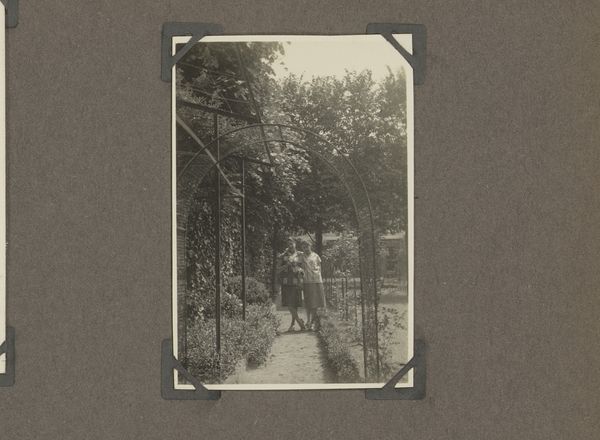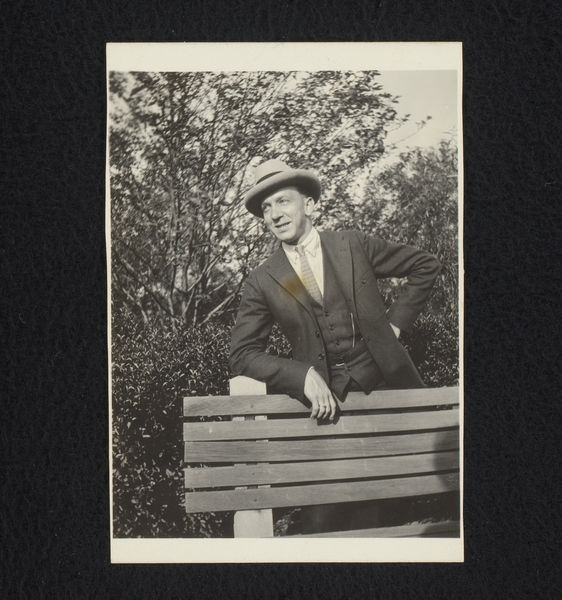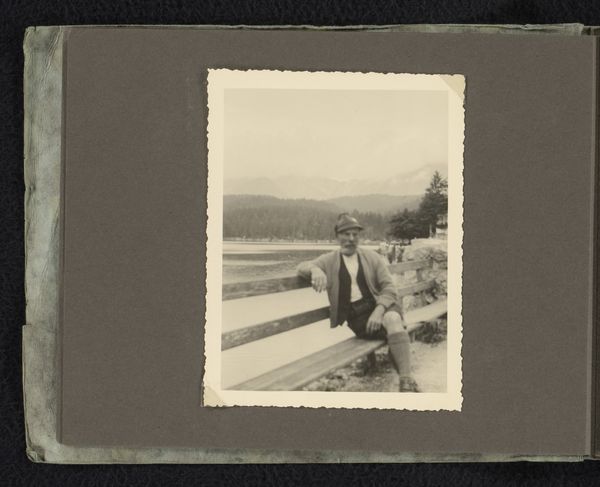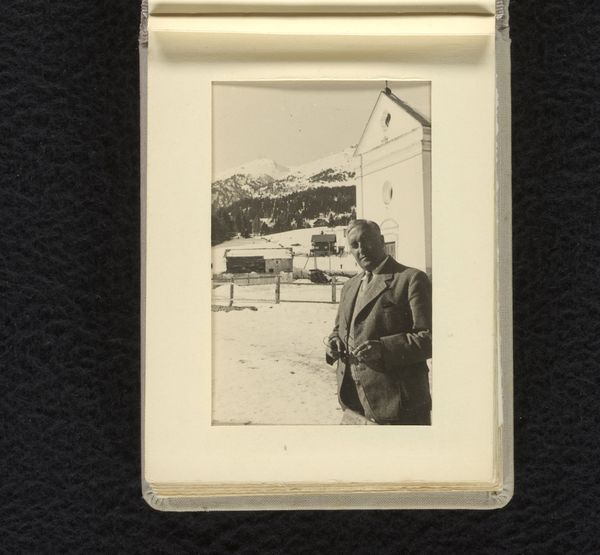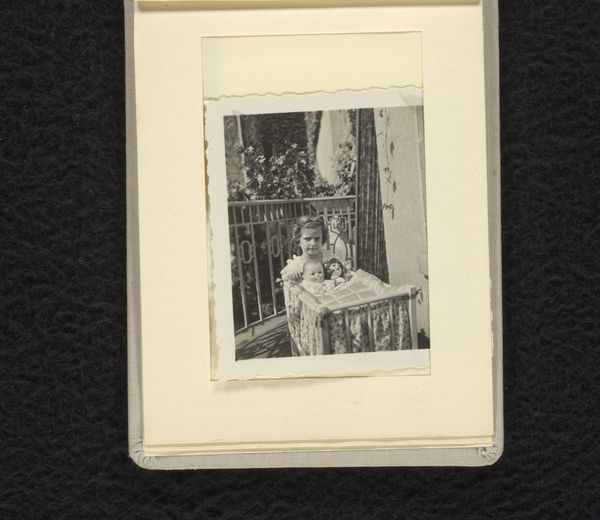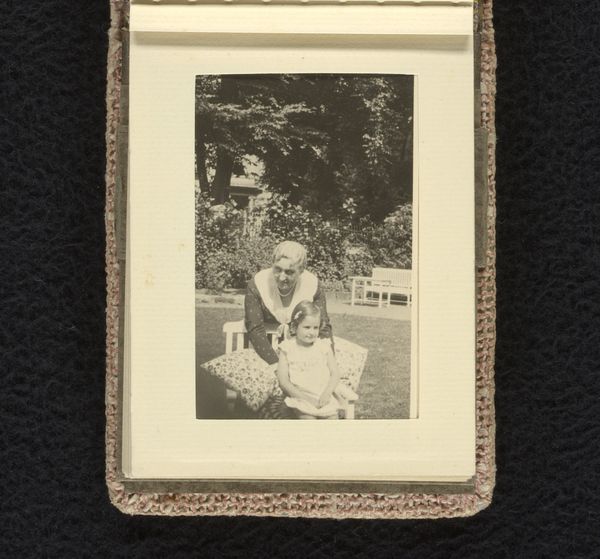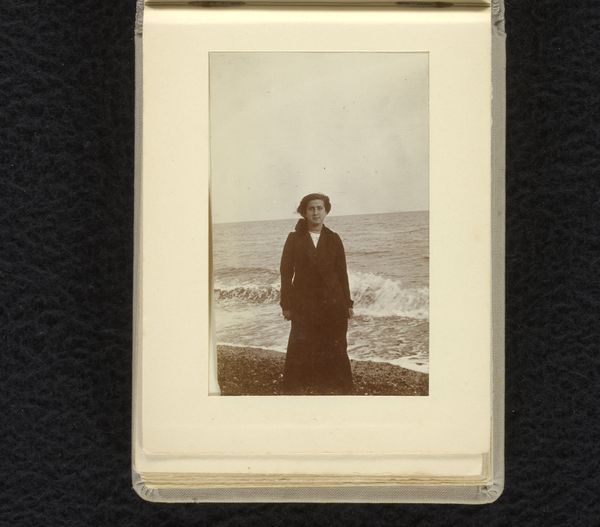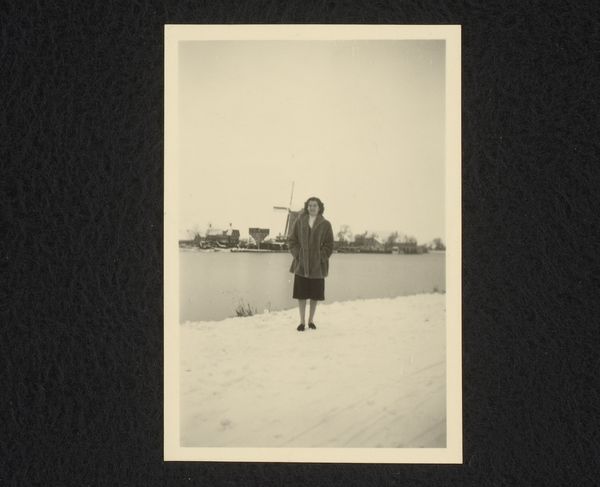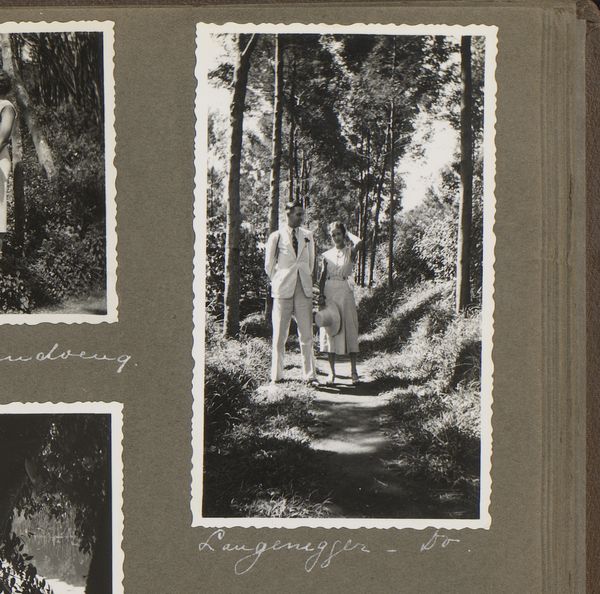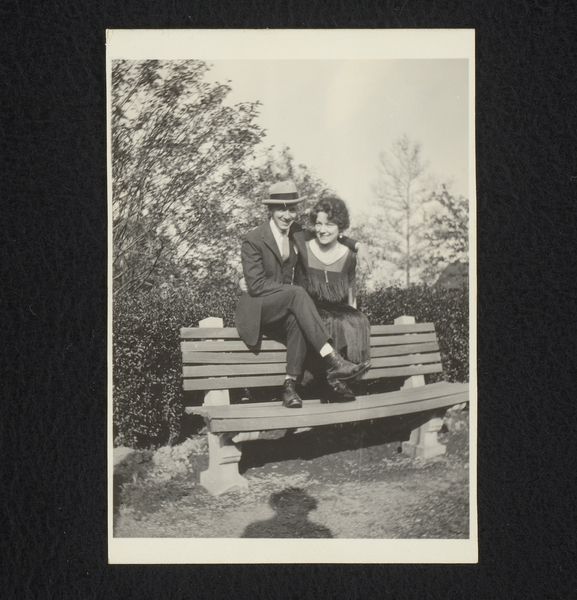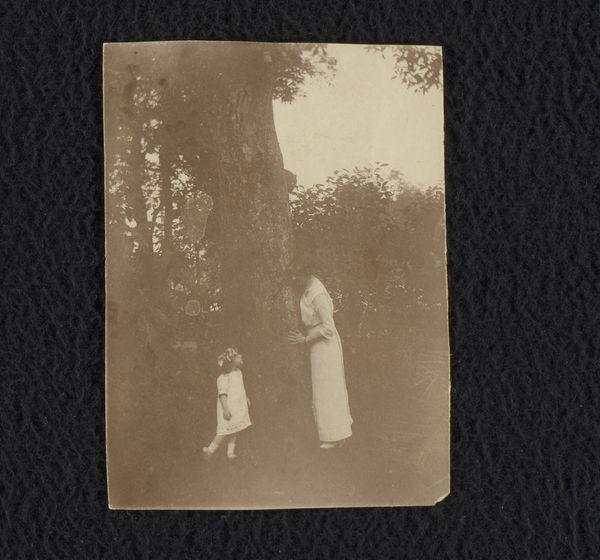
photography, gelatin-silver-print
#
portrait
#
print photography
#
landscape
#
photography
#
clothing theme
#
gelatin-silver-print
#
park
#
monochrome
Dimensions: height 91 mm, width 62 mm
Copyright: Rijks Museum: Open Domain
Editor: This is "Plaswijckpark," a gelatin-silver print from 1940. It depicts a woman on a wooden bridge in a park. I’m immediately struck by its stillness; she seems lost in thought. What do you see in this image that expands on that initial reading? Curator: Given the date, 1940, and the fact that it's a park scene, I immediately consider the historical context. Parks were, and still are, public spaces but they can be used to present ideas around social cohesion or the idealized health of the nation, and, of course, recreation provided an essential respite for citizens during periods of unrest or uncertainty. Editor: That’s interesting; I hadn't considered the historical context beyond just knowing it was an older photograph. How might this have influenced its creation or reception? Curator: Think about how controlled and manicured parks often are, how that control might serve a symbolic function in times of chaos. Do you see anything in the image, maybe in the figure’s posture or the composition, that might reinforce or even subvert that idea of control? Editor: I see what you mean about the controlled landscape; yet the woman is off to the side and dressed somewhat formally. It feels composed but a little unsettling at the same time. I suppose it's the setting contrasting with the individual presence that I am interpreting in the picture. Curator: Precisely! It's a tension that reflects broader social anxieties perhaps, and highlights the complex role public imagery plays. This was, and still is, part of photographic imagery’s purpose within culture. Editor: I never would have thought of this photo as being a type of cultural commentary, even a public work of art. It seems more complicated than a simple portrait in a park! Curator: Indeed. Examining the relationship between art, public spaces, and socio-political contexts often reveals layers of meaning we might otherwise miss. Editor: Thanks, it has completely shifted my perspective! I now think of photography more from its public reception and place in time.
Comments
No comments
Be the first to comment and join the conversation on the ultimate creative platform.
